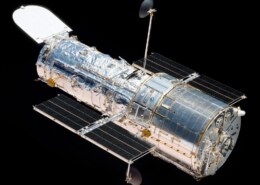Hubble has transformed our understanding of space by revealing the vastness and complexity of the universe, capturing detailed images of distant galaxies, measuring cosmic expansion, and providing insights into stellar formation and black holes. Finding Distant Galaxies: Hubble’s Deep Field images,Read more
Hubble has transformed our understanding of space by revealing the vastness and complexity of the universe, capturing detailed images of distant galaxies, measuring cosmic expansion, and providing insights into stellar formation and black holes.
- Finding Distant Galaxies: Hubble’s Deep Field images, like the Hubble Deep Field (HDF) and the Hubble Ultra Deep Field (HUDF), revealed thousands of galaxies in a tiny patch of sky, some as they were just a few hundred million years after the Big Bang.
- Measuring the Universe’s Expansion: Hubble’s observations of Type Ia supernovae in distant galaxies helped measure the rate of the universe’s expansion. This work led to the discovery of dark energy, a mysterious force driving the acceleration of this expansion.
- Detailed Pictures of Planets and Stars: The Hubble Space Telescope’s images of the Pillars of Creation, a part of the Eagle Nebula, showed stellar nurseries where new stars are forming, providing insights into the life cycle of stars.
- Studying Black Holes: Hubble helped observe the supermassive black hole in the center of the galaxy M87. This observation was crucial in confirming the presence of such black holes in many galaxies.
Hubble is important for astronomy because it provides crucial insights that ground-based telescopes cannot achieve, advancing our understanding of cosmic phenomena by avoiding atmospheric distortion and leading to groundbreaking discoveries.
See less

Black holes are cosmic objects formed from the remnants of massive stars that have undergone gravitational collapse. They possess such intense gravitational fields that even light cannot escape from them once it crosses a boundary called the event horizon. This phenomenon arises because the mass ofRead more
Black holes are cosmic objects formed from the remnants of massive stars that have undergone gravitational collapse. They possess such intense gravitational fields that even light cannot escape from them once it crosses a boundary called the event horizon. This phenomenon arises because the mass of the collapsed star is concentrated into an infinitely dense point known as a singularity.
The impact of black holes on their surroundings is profound. Nearby stars and other matter can be drawn into a swirling disk called an accretion disk before falling into the black hole. This process releases enormous amounts of energy in the form of X-rays and other radiation. Some black holes also eject powerful jets of particles at near-light speeds, influencing the dynamics of their galactic neighborhoods.
On a larger scale, supermassive black holes found at the centers of galaxies, like the one in our Milky Way, play a crucial role in galactic evolution. They regulate star formation by heating and expelling gas, influence the orbits of nearby stars, and are believed to have shaped the formation and growth of galaxies throughout cosmic history. In essence, black holes are not only enigmatic cosmic entities but also significant players in shaping the structure and dynamics of the universe.
See less